50,000 3,000 | ||
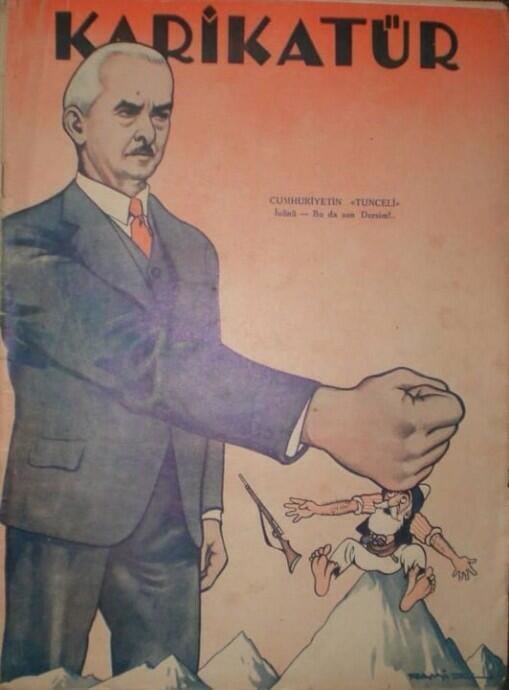 | ||
199 killed354 wounded 10,000 killed or13,160 rebels killed or50,000–80,000 killed11,818 into forced migration. Period March 1937 – December 1938 Similar Koçgiri rebellion, Sheikh Said rebellion, Ararat rebellion, Turkish War of Independence, Roboski airstrike | ||
The Dersim rebellion (Turkish: Dersim İsyanı) was a Zaza uprising against the Turkish government in the Dersim region of eastern Turkey, which includes parts of Tunceli Province, Elazığ Province, and Bingöl Province. The rebellion was led by Seyid Riza, an Alevi chieftain of the Yukarı Abbas Uşağı tribe. As a result of the Turkish military campaign against the rebellion, thousands of Alevi Zazas died and many others were internally displaced due to the conflict.
Contents
- Ottoman period
- Early republican era
- Law on Resettlement
- Tunceli law
- Fourth General Inspectorate
- The Rebellion
- Meeting at Halbori cells
- Turkish military operations
- First Tunceli Operation
- Second Tunceli Operation
- Third Tunceli Operation
- Sweep operations
- Aerial operations
- Consequences
- Numbers killed
- Genocide controversy
- Recent developments
- References

On 23 November 2011, Turkish prime minister Recep Tayyip Erdoğan gave an apology for the Dersim operation, describing it as "one of the most tragic events of our recent history".
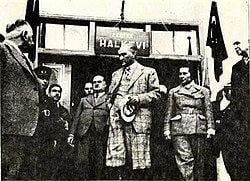
Ottoman period

During the Ottoman period, before the Tanzimat, most of the empire's eastern regions were administrated by the Ottoman feudal system. Authority in these regions was in the hands of feudal lords, tribal chieftains and aghas (dignitaries).
Early republican era
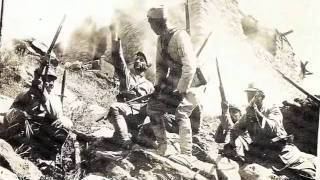
The situation of Dersim in the Ottoman Empire continued in the early years of the Republic of Turkey. Tribes from Dersim objected to losing authority and refused to pay taxes.
Complaints kept coming from the governors. In an Interior Ministry report in 1926, it was considered necessary to use force against the residents of Dersim.
Law on Resettlement
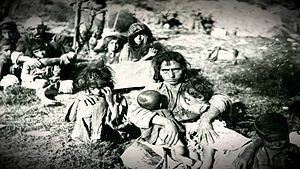
The Turkification process in Turkey began with the Turkish National Assembly passing the 1934 Law on Resettlement ('İskân Kanunu' Law No.2510, 13 June 1934). Its measures included the forced relocation of people within the country, with the aim of promoting cultural homogeneity. In 1935, the Tunceli Law was passed to apply the Resettlement Law to the newly named region of Tunceli, previously known as Dersim and populated by Kurmanci-speaking and Zaza-speaking Alevis. This area had a reputation for being rebellious, having been the scene of eleven separate periods of armed conflict over the previous 40 years.
"Tunceli" law
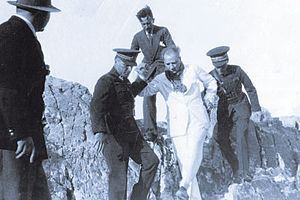
The Dersim region included the Tunceli Province whose name was changed from Dersim to Tunceli with the "Law on Administration of the Tunceli Province" (Tunceli Vilayetinin İdaresi Hakkında Kanun), no. 2884 of 25 December 1935 on January 4, 1936.
Fourth General Inspectorate
In order to consolidate its authority in the process of Turkification of religious and ethnic minorities, the Turkish Grand National Assembly passed the law, numbered 1164 and dated June 25, 1927. Following the First Inspectorate-General (January 1, 1928, Diyarbakır),
[the Thrace pogroms], the Second Inspectorate-General (February 19, 1934, Edirne) and the Third Inspectorate-General (August 25, 1935, Erzurum), the Fourth General Inspectorate (Dördüncü Umumi Müffetişlik) was established on June 6, 1936, in the traditional Dersim region, which includes Tunceli Province, Elazığ Province and Bingöl Province.
On 1 November 1936, during a speech in the parliament Atatürk acknowledged the situation in Dersim as Turkey's most important internal problem. Firstly, military stations were built in the strategical zones. Then the Inspector of the Fourth General Inspectorate, Lieutenant General Abdullah Alpdoğan was given the authority to sign court orders, providing security, to exile people that lived in the city when necessary.
The Rebellion
After the "Tunceli" Law, the Turkish government built military observation posts in the centers of districts such as Kahmut, Sin, Karaoğlan, Amutka, Danzik, and Haydaran.
Following public meetings in January 1937, a letter of protest against the law was written to be sent to the local governor. According to Kurdish sources, the emissaries of the letter were arrested and executed. In May, a group of local people ambushed a police convoy in response, the first act of a localised conflict.
Meeting at Halbori cells
Seyid Riza, the chieftain of Yukarı Abbas Uşağı, sent his followers to the Haydaran, Demenan, Yusufan, and Kureyşan tribes to make an alliance.
According to Turkish authorities, on March 20–21, 1937, at 23:00 hrs, the Demenan and Haydaran tribes broke a bridge connecting Pah and Kahmut in the Harçik Valley. The Inspector General gave the order to prepare for action to the 2nd Mobile Gendarmerie Battalion at Pülümür, the 3th Mobile Gendarmerie Battalion at Pülür, the 9th Gendarmier Battalion at Mazkirt, and the Mobile Gendarmerie Regiment at Hozat, and sent one infantry company of the 9th Mobile Gendarmier Battalion to Pah.
Turkish military operations
Around 25,000 troops were deployed to quell the rebellion. This task was substantially completed by the summer and the leaders of the rebellion, including tribal leader Sayiid Riza, were hanged. However, remnants of the rebel forces continued to resist and the number of troops in the region was doubled. The area was also bombed from the air. The rebels continued to resist until the region was pacified in October 1938.
According to Osman Pamukoğlu, a general in Turkish Army in the 1990s, Atatürk had given the operational order himself.
First Tunceli Operation
On September 10–12, 1937, Seyit Rıza came to the government building of the Erzincan Province for peace talks and was arrested. On the next day, he was transferred to the headquarters of the General Inspectorate at Elazığ and hanged with 6 (or 10) of his fellows on November 15–18, 1937 The victims(?) were:
On November 17, 1937, Mustafa Kemal Atatürk came to Pertek to take part in the opening ceremony for the Singeç Bridge.
Second Tunceli Operation
The prime minister, Celal Bayar (in office: October 25, 1937 – January 25, 1939) had agreed to an attack on the Dersim rebels. The operation started on January 2, 1938 and finished on August 7, 1938.
Third Tunceli Operation
The Third Tunceli Operation was carried out between August 10–17, 1938.
Sweep operations
Sweep operations that started on September 6, were continued for 17 days.
Aerial operations
Turkish planes flew numerous sorties against the rebels during the rebellion. Among the pilots was Kemal Atatürk's adopted daughter, Sabiha Gökçen, the first Turkish female fighter pilot. A report of the General Staff mentioned the "serious damage" that had been caused by her 50 kg bomb, upon a group of fleeing bandits.
Muhsin Batur, engaged in operations for about two months over Dersim, but he stated in his memoirs that he wanted to avoid explaining this part of his life. Nuri Dersimi claimed that the Turkish air force bombed the district with poisonous gas in 1938.
Consequences
According to an official report of the Fourth General Ispectorate, 13,160 civilians were killed by the Turkish Army and 11,818 people were taken into exile, depopulating the province. According to the Dersimi, many tribesmen were shot dead after surrendering, and women and children were locked into haysheds which were then set on fire. According to McDowall, 40,000 people were killed. According to Kurdish Diaspora sources, over 70,000 people were killed.
A key component of the Turkification process was the policy of massive population resettlement - a result of the 1934 law on resettlement. This policy targeted the region of Dersim as one of its first test cases, and it had disastrous consequences for the local population.
Hüseyin Aygün, a jurist author, wrote in his book Dersim 1938 and Obligatory Settlement:
"The rebellion was clearly caused by provocation. It caused the most violent tortures that were ever seen in a rebellion in the Republican years. Those that didn't take place in the rebellion and the families of the rebels were also tortured."Numbers killed
The contemporary British estimate of the number of deaths was 40,000, although historians suggest that this figure may be exaggerated. It has been suggested that the total number of deaths may be 7,594, over 10,000, or over 13,000. Around 3,000 people were forcibly deported from Dersim.
Genocide controversy
Many Kurds and some ethnic Turks consider Turkish military operations in Dersim to constitute genocide. A proponent of this view is the academic İsmail Beşikçi. Under international laws, it has been argued, the actions of the Turkish authorities were not genocide, because they were not aimed at the extermination of a people, but at resettlement and suppression. Scholars, such as Martin van Bruinessen, have instead talked of an ethnocide directed against the local language and identity.
In March 2011, a Turkish court ruled that the actions of the Turkish government in Dersim could not be considered genocide according to the law because they were not directed systematically against an ethnic group.
Recent developments
On November 23, 2011, Prime Minister Recep Tayyip Erdogan apologized "on behalf of the state" over the killing of over 13,000 people during the rebellion. His remarks were widely commented on both inside and outside Turkey. His comments were pointedly directed at opposition leader Kemal Kılıçdaroğlu. Erdogan reminded his audience that Kılıçdaroğlu's party, the CHP, had been in power at the time of the massacre, then the only political party in Turkey. He described the massacre as "one of the most tragic events of our near history" saying that, whilst some sought to justify it as a legitimate response to events on the ground, it was in reality "an operation which was planned step by step".
